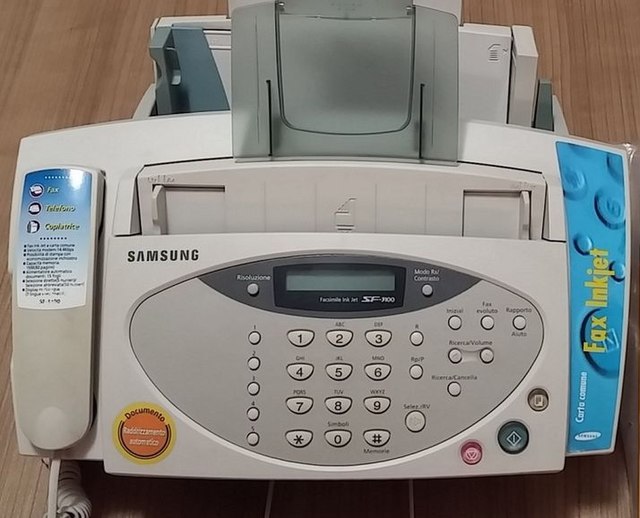
Fax
Method of transmitting images, often of documents / From Wikipedia, the free encyclopedia
Dear Wikiwand AI, let's keep it short by simply answering these key questions:
Can you list the top facts and stats about Fax?
Summarize this article for a 10 year old
Fax (short for facsimile), sometimes called telecopying or telefax (short for telefacsimile), is the telephonic transmission of scanned printed material (both text and images), normally to a telephone number connected to a printer or other output device. The original document is scanned with a fax machine (or a telecopier), which processes the contents (text or images) as a single fixed graphic image, converting it into a bitmap, and then transmitting it through the telephone system in the form of audio-frequency tones. The receiving fax machine interprets the tones and reconstructs the image, printing a paper copy.[1] Early systems used direct conversions of image darkness to audio tone in a continuous or analog manner. Since the 1980s, most machines transmit an audio-encoded digital representation of the page, using data compression to transmit areas that are all-white or all-black, more quickly.


Initially a niche product, fax machines became ubiquitous in offices in the 1980s and 1990s.[2] They have largely been rendered obsolete as a whole by Internet-based technologies such as email and the World Wide Web, but are still used in some medical administration and law enforcement settings.[3]